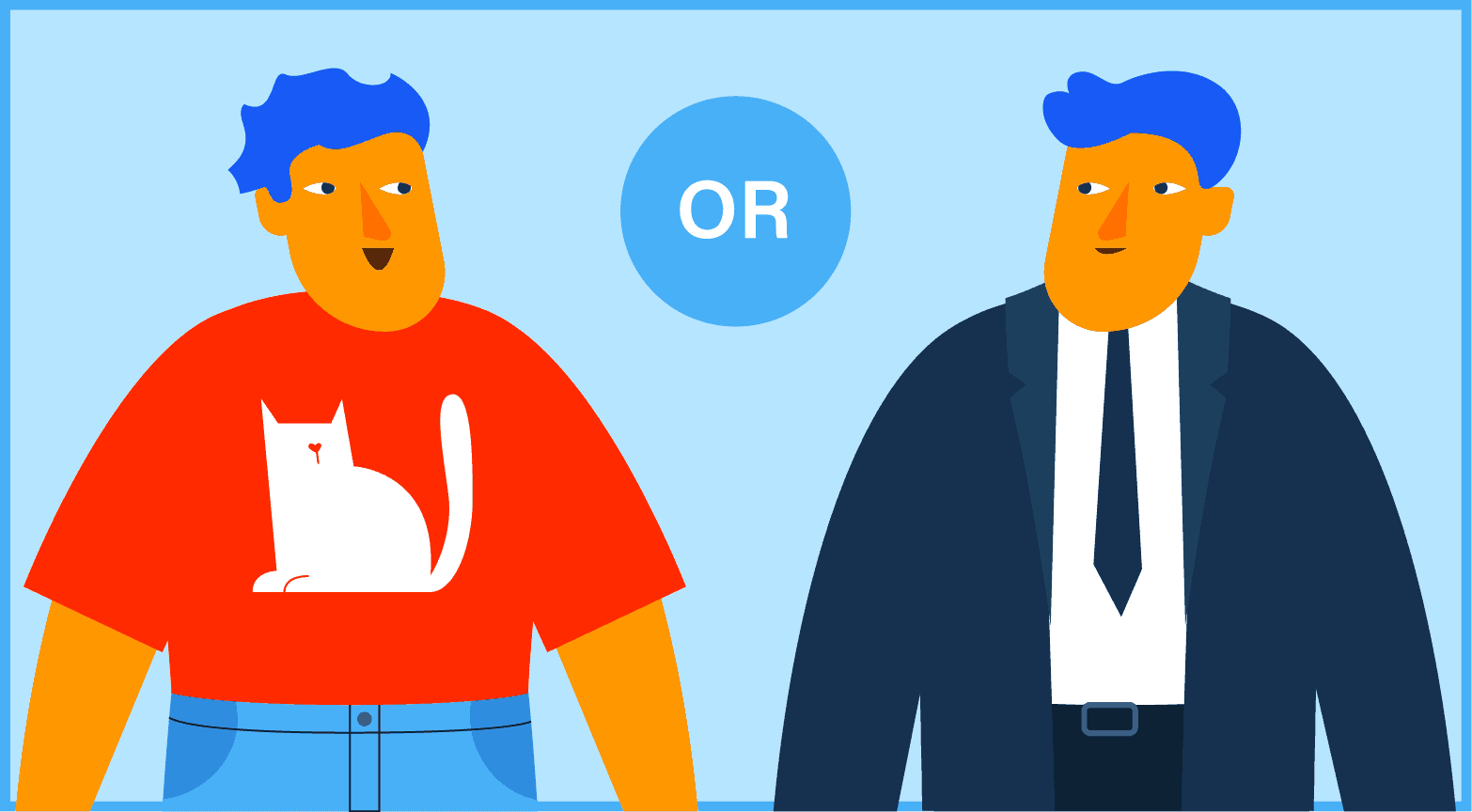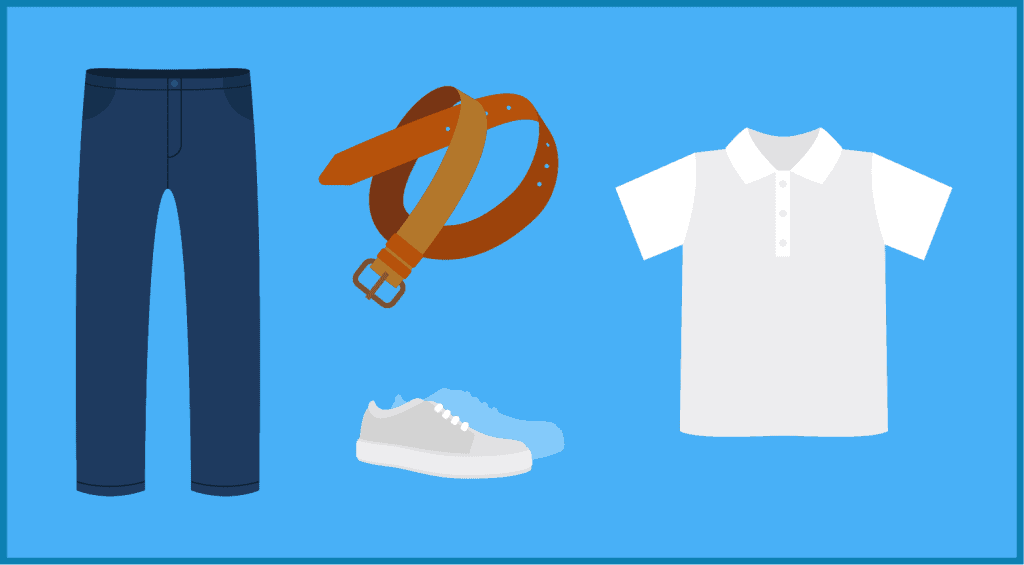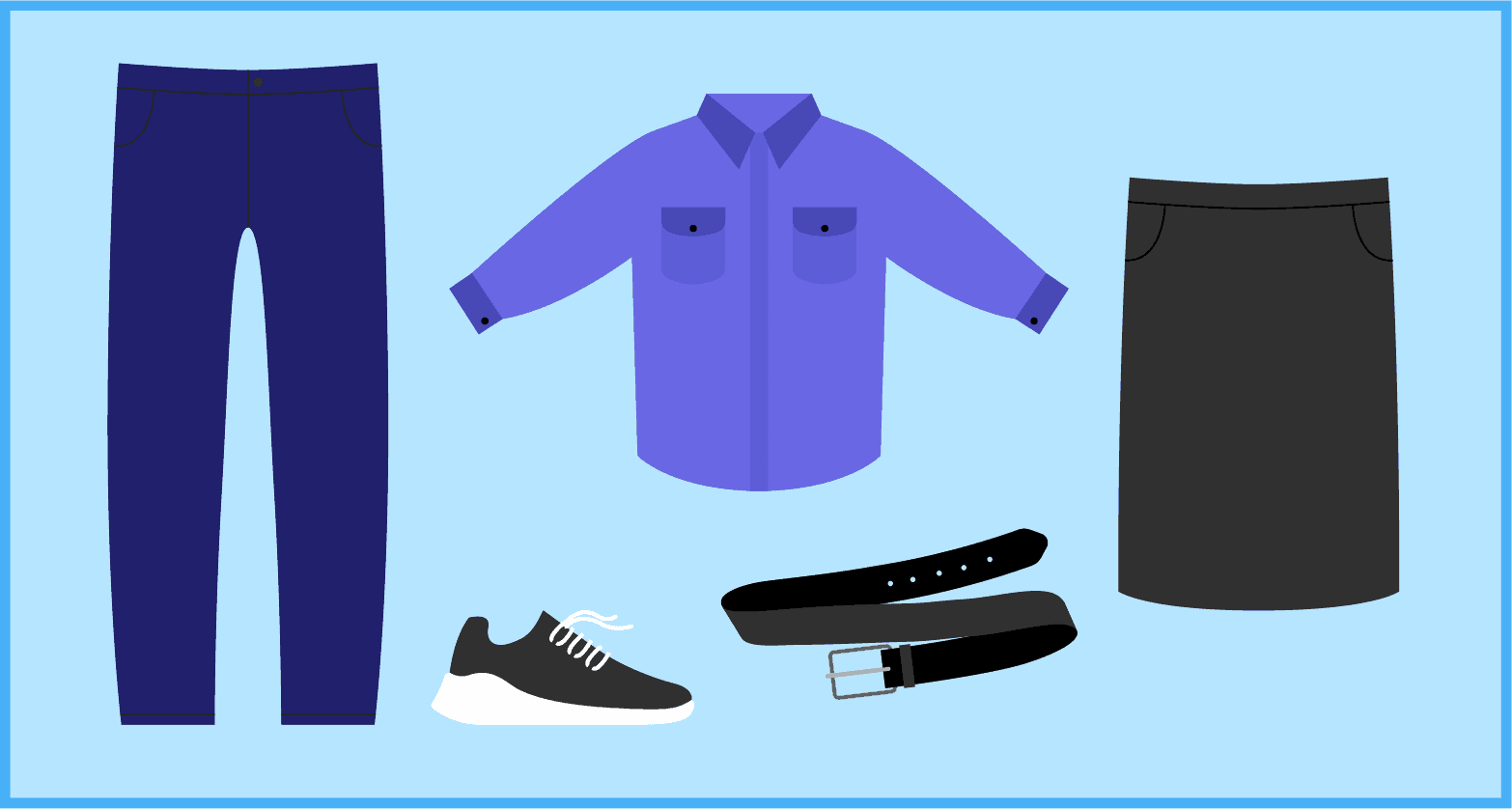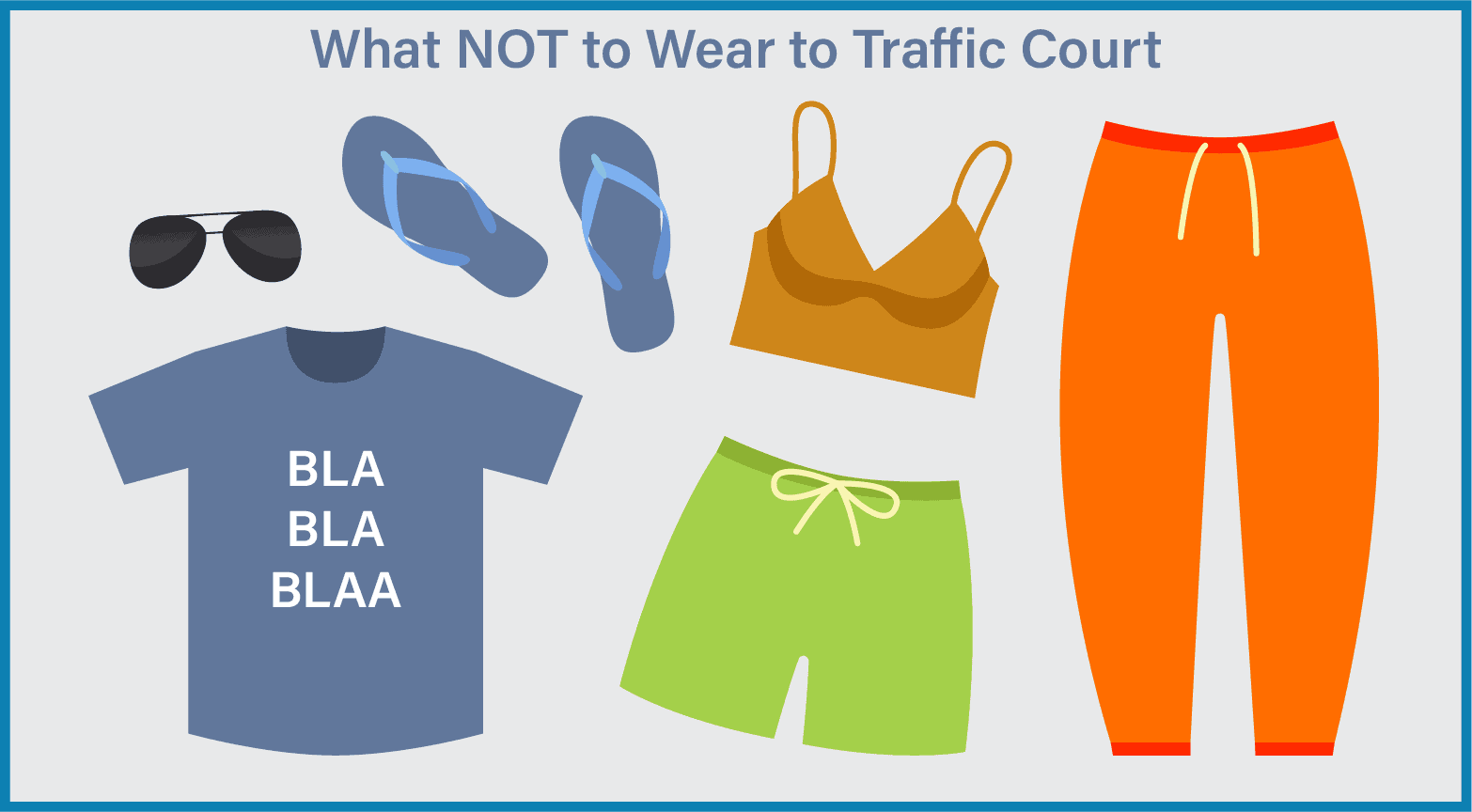If you’re scheduled to appear in traffic court, you might be wondering what to wear. It’s a good question. Courts are a formal setting where making a good impression counts.
When it’s time to attend a court trial to present your case before a judge, looking clean, tidy, and professional is essential for making a good impression. Here’s a quick overview how to dress:
- Go business casual
- Wear clothes that fit well
- Opt for neutral colors
- Keep your jewelry to a minimum
- No rips and tears
- No flashy accessories
- No wild patterns
- No heavy makeup
- No hats or caps
California drivers charged with a traffic offense are entitled to an arraignment and a trial. This applies to both those who are subject to a mandatory court appearance (such as following a DUI conviction) and those who simply want to fight a ticket.
An arraignment is the first formal appearance in court. What you should wear depends on why you’re there.
- If you’re simply there to plead “not-guilty” and request a trial date, you can wear anything that doesn’t violate the court’s rules. For example, hats and glasses are typically prohibited.
- If you ask for traffic school or a reduced fine, then you should wear something smart and professional-looking (more on that later).
Note that sometimes the arraignment and trial are scheduled on the same date. If that’s the case, wear proper business attire from the moment you step foot in court.

“Once, during my time as a Public Defender, I encountered an individual who wore a superhero costume to a courtroom setting, intending to make a statement. While it initially elicited a chuckle from some, the judge was not amused and gave a stern lecture on the importance of courtroom decorum.” – Cynthia Hernandez, Managing Attorney for Hernandez Family Law & Remediation
What to Wear to Traffic Court for Male and Masculine-Presenting People

Most U.S. courts explicitly state that both attorneys and clients must wear appropriate attire. The judge may even exclude you from participating in courtroom proceedings if your outfit is too casual, revealing, or flashy.
“I always laugh when I think of the guy who turned up in a neon-green “Party Animal” jersey – not the best vibe to give off in front of a judge.” – David Weisselberger, Founding Partner of Erase the Case
Acceptable clothing:
- Basic jeans with no rips or tears. They should fit well without being baggy or sagging.
- Dress pants
- Khakis or slacks
- Polo shirts
- Neutral blazers
- Button-down shirts
- Business suits
Acceptable accessories:
- Clean sneakers or tennis shoes, without rips or holes
- Dress shoes
- Classic belt
- Tie
- Wristwatch
- Jewelry that is not oversized or very flashy
Acceptable grooming:
- You should be clean and tidy
- Try to get a haircut before your court date
- Shave or tidy up any facial hair
- Trim your nails if necessary
As a general rule, dress like you’re going to church or a job interview. Ideally, wear traditional colors like white, black, gray, or blue.
What to Wear to Traffic Court for Female and Feminine-Presenting People

Just like men, women should opt for business or business casual attire when attending traffic court. Let’s see a few examples of appropriate outfits.
“One of the most inappropriate outfits I’ve seen in court was a defendant wearing a bright, sequined costume, complete with a feathered hat. This eye-catching getup not only drew gasps from the courtroom but also elicited a mixture of chuckles and raised eyebrows from the judge and audience.” – Zain Ali, Corporate Lawyer at Affinity Lawyers
Acceptable clothing:
- Nice jeans without rips or tears. They should fit well without being baggy or sagging
- Khakis or slacks
- Skirts that are just above knee length or longer
- Polo shirts
- Button-down shirts
- Blouses
- Jackets or blazers
- Casual dresses that aren’t too revealing
- Business suits
Acceptable accessories:
- Clean sneakers or tennis shoes without rips or holes
- Dress shoes
- Classic sandals (avoid flip-flops)
- Conservative heels of up to 2” (avoid stilettos and platforms)
- Classic belt
- Hair accessories like headbands or hair ties
- Jewelry that is not oversized or very flashy
- Wristwatches
Acceptable grooming:
- You should be clean and tidy
- Make sure your hair is brushed and styled
- Makeup should err on the conservative side. Avoid very bright colors, glitters, etc.
- Keep your nails short and neat
By following these guidelines, you’ll be able to present yourself in a way that’s respectful and appropriate for the courtroom setting.
Remember, the goal is to convey professionalism and respect through your attire, which can have a subtle but significant impact on your court experience.
Traffic school can help you keep a clean driving record, prevent insurance increases, and more!
What Not to Wear to Traffic Court

While knowing what to wear to traffic court is important, it’s equally crucial to understand what attire to avoid and why. Inappropriate clothing can negatively impact the court’s perception of you. It can even get you kicked out of the courtroom!
“The craziest thing I have ever seen someone wear is a shirt that said breathalyzer and the shirt had an arrow pointing down. Unfortunately for this individual, the older female attorney was not amused by the shirt especially in drug court. He did not prevail on his request to have the judge throw the charge out.” – Elizabeth Farrugia, Managing Attorney and Founder at Leonidas Law Firm
Some clothing items and accessories are banned in most, if not all, court settings. These include:
- Hats or caps
- Outwear (e.g., parkas, jackets, coats)
- Clothes that expose the midriff or underwear
- Sleeveless shirts
- Shower shoes
- Ill-fitting clothes (e.g., baggy pants)
- Dirty clothing
- Revealing outfits (e.g., see-through shirts)
- Shorts
- Ripped or torn jeans
- Clothing items with inappropriate images or messages (e.g., swear words)
The Superior Court of California, County of Inyo and the Superior Court of California, County of Kings also forbid sunglasses, bare feet, and any outfits that “reflect poorly upon the dignity of the court,” such as those listed above.
To make a positive impression, it’s best to avoid the following, too:
Clothing That’s Too Casual
- Graphic Tees, Tank Tops, Shorts, and Athletic Wear: These items are considered too informal for a setting as serious as a courtroom.
- Pajamas and Swimwear: Wearing such attire can be seen as disrespectful and may give the impression that you’re not taking the proceedings seriously.
“Pajamas are so common that you almost expect to see someone wearing them every month at least, but it’s still inappropriate. It demonstrates an utter lack of respect for the court, and it makes it hard to take the person seriously.” – Melanie Musson, 23-year law enforcement officer and consultant with carinsurance.org
Revealing or Flashy Outfits
- Short Skirts, Low-Cut Tops, Crop Tops: Clothing that is overly revealing can be distracting and may not convey the professional image required in court.
- Flashy or Oversized Jewelry: Excessive accessories can detract from the seriousness of your appearance and may not align with the conservative nature of court decorum.
Inappropriate Footwear
- Flip-Flops, Stilettos, and Platform Heels: Such footwear is either too casual (flip-flops) or can be seen as overly flamboyant (stiletto or platform heels), which is not suitable for the court environment.
Why What You Wear in Traffic Court Matters
While it’s true that judges aim to be impartial, the reality is that appearances do have an impact. How you dress for your traffic court appearance can subtly influence perceptions and outcomes.
Here’s why paying attention to your attire is crucial:
- Creating a Respectful Impression: Your attire is often the first thing noticed by the judge and court personnel. Dressing appropriately shows respect for the court and its procedures. According to research, people often perceive those wearing informal attire, such as T-shirts and sweatpants, as less ethical than those dressed in business casual outfits.
In another study, researchers assessed the perceived professionalism of dentists and lawyers based on their clothing choices. Subjects in formal attire were rated as more suitable, capable, and approachable than those wearing smart or casual outfits.
- Establishing Credibility: Well-chosen attire can lend an air of credibility and seriousness to your case. It communicates that you take the charges and the court process seriously.
Color Psychology: Certain colors can evoke specific psychological responses. For example, blue is often associated with trustworthiness, while black can convey seriousness and professionalism. In one study, researchers demonstrated that red clothing is associated with anger, dominance, and aggression. By comparison, the color blue or gray doesn’t have this effect.
Practical Considerations
- Consider Your Circumstances: Think about the message your attire sends about your situation. For example, if you’re requesting a financial hardship waiver, overly expensive or flashy clothing might contradict your claim. If you are taking the stand to argue your case, you’ll want to look credible.
- Remember Your Comfort: Courtrooms can vary in temperature. Consider layering your clothing, like wearing a blazer or sweater, which can be removed if needed.
- Avoid Strong Fragrances: Strong perfumes or colognes can be overwhelming in enclosed spaces like courtrooms and may cause discomfort to others.
First Time in Traffic Court? Here’s What to Expect
Going to traffic court for the first time can be nerve-racking, but things usually go pretty smoothly. Traffic courts are less formal than criminal courts. Plus, there’s usually no jury involved.
In traffic court, you don’t have the right to a court-appointed attorney. So, you can either represent yourself or hire a traffic lawyer to plead for you at the trial.
Next, follow these steps:
- Arrive at the court early, as you may need time to find the right courtroom.
- Let the clerk or bailiff know that you’re there, and then wait for them to call your case.
- Take a seat at the counsel table, facing the judge.
- Swear to tell the truth before making your opening statement.
- Present your case – or ask your attorney to do it.
- Wait for the officer who ticketed you to explain what happened. Make objections if necessary.
- Present evidence and call in witnesses to testify on your behalf.
- Make a closing argument (if the court allows it).
The judge will make a verdict on the spot after hearing both parties. If the police officer doesn’t show up, your ticket may be dismissed.
A typical trial for a traffic ticket shouldn’t take longer than a few minutes. Since there is no jury, the only people present in the courtroom will be:
- The defendant (you)
- A traffic attorney (if you hire one)
- The judge
- A court clerk
- A bailiff
- A prosecutor (in some courts)
- The police officer
- Witnesses (where applicable)
If you’ve been charged with a traffic infraction, you have the right to a trial by written declaration. This eliminates the need to go to court.
However, if you’re not eligible for a trial by written declaration and you fail to appear in court, you’ll be charged with a misdemeanor. That means you’ll face additional penalties, including a fine of up to $1,000 and, potentially, jail time.
Ask for Traffic School
If you’ve been charged with a moving infraction, you can plead guilty and ask for traffic school. Attending traffic school will mask one point from your license, and prevent your auto insurance rates from going up. Plus, you won’t have to go to trial anymore.
First, plead guilty to the conviction and tell the judge that you wish to take a traffic school course. Do it at least two weeks before the trial date. Once you’ve got their permission, pay your court fine plus the traffic school administrative fee.
Some judges may offer this option even if you go to trial, plead not guilty, and lose the case. But, generally, it’s best to admit your fault and pay the fine if you want to complete traffic school.
At Best Online Traffic School, you can complete the course in as little as two or three hours. Our course is fully licensed by the California DMV (#E1314) and has a 99.9% pass rate.
We charge a flat fee of only $27.99, which includes FREE same-day submission to the court and DMV. And you don’t pay a thing until you pass!
Our course can be completed from any device, and your progress is automatically saved. This means you can take as many breaks as you need and resume studying anytime.
Start traffic school for FREE today.
FAQs about Traffic Court Attire
Still wondering what to wear to traffic court? Here are the answers to some frequently asked questions about traffic court attire and what to expect during a trial.
How long does the court take for a traffic ticket?
A traffic court trial can take anywhere between 30 minutes and four hours or longer, depending on the complexity of your case.
If you plead guilty or the police officer who issued your ticket doesn’t show up, you should be done with it in about half an hour.
What to bring to court for a traffic ticket?
Make sure you bring your traffic ticket, driver’s license, a copy of your driving record, and any supporting evidence, such as:
• Photos
• Sketches
• Dashcam footage
• Written witness statements
• Repair receipts (if the ticket involves a vehicle defect)
• Vehicle registration documents
• Proof of insurance
Also, bring a credit card or cash to pay any fines and court fees.
Is it OK to wear jeans to court?
Generally, yes, but you should stick to classic jeans. Do not wear faded, distressed, or tight jeans, as you may come off as unprofessional or disrespectful.
Should I tuck in my shirt for court?
Tuck in your shirt before appearing in court. Pair it with classic jeans, dress pants, or a knee-length skirt (if you’re a woman).
Can I wear all black to court?
An all-black outfit may seem imposing and authoritative, which could work against you in court. Dark gray or navy blue is a better option.
How short can a dress be for court?
The dress you wear in traffic court shouldn’t be shorter than knee length. Anything shorter could be viewed as unprofessional.
Should I wear glasses to court?
Eyeglasses are perfectly fine for a court appearance. However, you may not wear sunglasses unless you have a valid medical reason.
What is considered “business casual”?
This dress code describes a mix of casual and formal clothing, such as a dress shirt paired with a blazer, khakis, and loafers or a light sweater, dress pants, and flats. It may be more formal than what you typically wear (unless you work in a formal setting), but it’s likely less formal than what you’d wear to, say, a wedding.
What is considered “business casual”?
This dress code describes a mix of casual and formal clothing, such as a dress shirt paired with a blazer, khakis, and loafers or a light sweater, dress pants, and flats. It may be more formal than what you typically wear (unless you work in a formal setting), but it’s likely less formal than what you’d wear to, say, a wedding.
What is the best color to wear in court?
Opt for dark or neutral colors, such as gray, beige, white, or navy blue. Avoid bright or neon colors and all-black outfits.
Why are shorts not allowed in court?
It isn’t that they aren’t allowed – they just aren’t recommended. Wearing shorts in court can send the wrong message. These clothing items are too casual for a courtroom setting and may be perceived as unprofessional.
